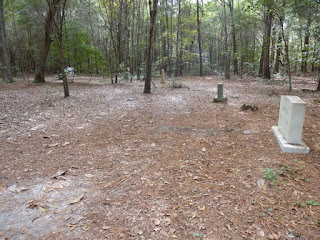Reaching South Carolina meant reaching one of my goals for the year: To have visited all 48 of the continental United States. I still have Alaska and Hawaii left, but their distance from the rest of the States makes them ideal candidates for separate trips. I had toyed with the idea of driving to Alaska from Washington State while on this really long road trip. But when I learned it was 2000 miles just from Seattle to Anchorage, not counting any other touring of that state, I decided to pass.
So South Carolina = 48 States seen, a feat of which I am quite proud.
I split my time in Charleston between the old city area and an 18th-Century Plantation several miles outside of the city.
I'm glad I took many photos of Charleston and Savannah both, and am writing my memories of both, because I suspect that years from now, I might have a hard time keeping them straight were it not for my recordings. They are both old, southern coastal cities. Both are beautiful and have similar weather. They're only about 100 miles apart too, and while I didn't look them up, they probably developed around the same time. But I found I liked Savannah a lot more than Charleston.
 |
| Some homes in historic Charleston, S.C. |
Charleston's old city is quite extensive. One could spend hours walking around the town, and it's big enough that a trolley tour wouldn't be a waste either. I walked, as the weather was nice and I really like walking.
 |
| More Charleston |
But unlike Savannah, Charleston seems much more commercial. It was lot busier than Savannah and had too many shops. The historic Charleston City Market (pictured below), which looks pretty cool and was probably once a legitimate local market, is now filled with women's clothing stores and Christmas ornament shops (a sure sign that you're in a tourist town). And wall-to-wall people. Now that I think back, I was reminded of Georgetown in Washington, D.C. It's pretty cool to look at and walk around in, but it's now overwhelmed by too many people and commercialism.
 |
| Charleston City Market |
So downtown Charleston wasn't bad for an afternoon walk around town, but it didn't strike me as a place I'd want to return to.
Outside of downtown, however, are a handful of 18th Century plantation houses. I visited Drayton Hall, and found it will worth the visit. The property is owned by the National Trust, which chose to preserve the property rather than restore it. That is, the property is maintained in good condition in the style in which it existed when the Trust bought it (in the 1980s I think?) rather than being renovated to look like it did when it was first built.
 |
| Drayton Hall |
So there are a number of places on the property that show architectural details from different eras (and frankly, sometimes don't match very well) but it retains the authenticity of keeping pieces that were installed by the people who lived there, rather than recreating pieces from modern equipment or supplying pieces that were taken from other properties.
 |
| Inside Drayton Hall |
I was unaware, until this visit, that most upper class southern plantation owners did not live on the property where the crops were grown. Instead, most of them had homes on "small" plantations, but the crops and the accompanying slaves lived elsewhere. This is true of Drayton Hall, which is where the family lived (but not true of the
Kent Plantation House, which was a middle-class plantation).
Much to my delight, the Drayton property is home to a small african-american cemetery, where a few dozen (maybe more, records are scarce) people from the area were laid to rest from the 18th Century until the 1990s. In accordance with the wishes of the last person buried there, who was also the main source of information about the graveyard, no efforts are being made to locate more graves or identify bodies.
 |
| "Leave 'em rest" was the request of the last person to be buried here. |
 |
| Most graves are unmarked, or their wooden headstones disappeared long ago. |









No comments:
Post a Comment